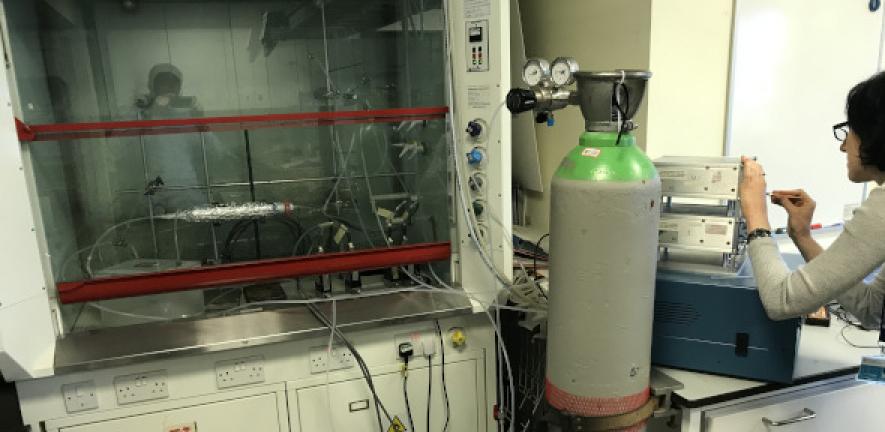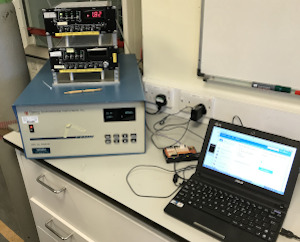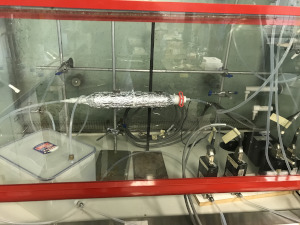
It can take up to 45 minutes to disinfect ambulances once they have transported a patient suspected of having COVID-19. In response to a Defence and Security Accelerator (DASA) on behalf of the Welsh Ambulance Service to develop a rapid sanitising technology, Dstl asked Professor Rod Jones and Dr Chiara Giorio for their help with testing ozone.
Ozone (O3) is an effective disinfectant, and has been used for many years to disinfect rooms, hospital equipment, and as an alternative to chlorine in swimming pools.
During the SARS epidemic of 2003, ozone sterilization was used to purify environments infected with SARS-CoV-1. It is thought ozone will work in the same way against the similar SARS-CoV-2 ,which causes COVID-19, by diffusing through the protein coat and damaging viral RNA.
“In order to use ozone to disinfect ambulances, Dstl needs to be sure the ozone has successfully reached and sanitised all parts of the ambulance interior,” says Giorio. “So they need accurate devices to test the concentration of ozone in different parts of the ambulance.”
This is where Giorio and Senior Technical Officer Ray Freshwater were able to help.
Giorio’s research involves combining field measurements and laboratory experiments to understand the evolution of particles in the atmosphere, and to assess their effects on climate and on public health. “Ozone is one of the main oxidants present in the atmosphere, and aids in the formation of secondary aerosol particles,” she says. “As part of my research I use ozone and other gases to simulate reactions that occur in the atmosphere that can produce particles.”
 Giorio has an ozone generator to help simulate these reactions. Ollie May, who is a scientist at Dstl and is completing his PhD here in the Department under Professor Steven Ley, asked Giorio and Jones to use this generator to help Dstl test the accuracy of novel enzymatic indicators (EIs) and electrochemical sensors.These are critical for measuring whether ozone has penetrated an ambulance interior effectively.
Giorio has an ozone generator to help simulate these reactions. Ollie May, who is a scientist at Dstl and is completing his PhD here in the Department under Professor Steven Ley, asked Giorio and Jones to use this generator to help Dstl test the accuracy of novel enzymatic indicators (EIs) and electrochemical sensors.These are critical for measuring whether ozone has penetrated an ambulance interior effectively.
Equipment to analyse the ozone concentration
Using the lab’s ozone generator, Giorio and Freshwater were able to produce ozone at controlled concentrations into a fume cupboard containing the indicators and sensors, which May and his colleagues could then use as a baseline.
Dstl have also trialled one of the Jones group’s Electro Chemical Cell (ECC) boards, which group members have used for many years to measure atmospheric gases. Freshwater says: “We have found ways to make the measurements easier and make the data easy to compile, so they might offer a quicker route to making improvements in their measurements.”
Dstl researchers followed up on these tests by replicating the interior of an ambulance inside a chemical exposure chamber back at Porton Down. Dstl recently announced that 12 technologies were tested, in some cases reducing cleaning time from an hour to around ten minutes. May says, “Although not mentioned explicitly, Chiara and Ray’s contributions were key to this work.” Giorio says: “We are just happy we were able to help.”

A close-up view of the fume cupboard complete with sensors to measure ozone concentrations.
All photos courtesy Ray Freshwater.

